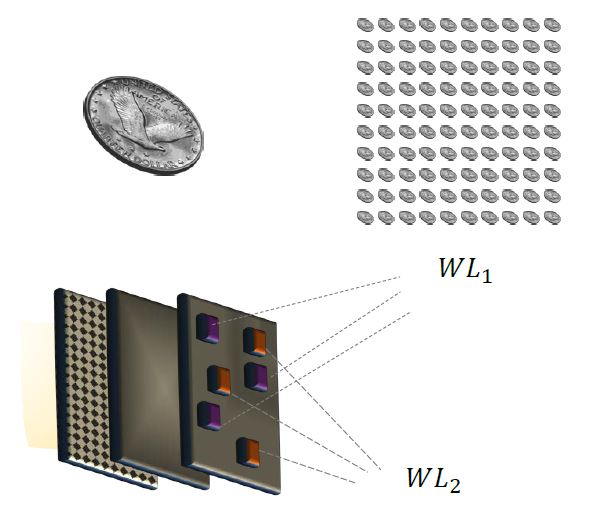This neuro-inspired optical computing platform and associated architecture enable the manufacture of computer chips that perform high-level computing and decision-making tasks. The chips can be implemented in electronic, photonic, and other engineering platforms. The architecture operates without the need for precise design and fabrication requirements that often bottleneck the dissemination of alternative computing solutions.
This Georgia Tech innovation also provides pathways for implementing computing solutions with integrated photonic systems. The architecture is primarily based on formation of artificial intelligence (AI) chips that implement algorithms compatible with photonic structures. The innovation can be implemented as an ultra-efficient co-processor by using a large set of optical perceptrons (e.g., weak learners), which can achieve practical optical computing solutions that offer significant improvements over electronic counterparts (e.g., graphics processing units [GPUs]).
Because marginally successful computing perceptrons can be used, a wide variety of optical domain selections are available, including resonators or meta-atoms in cascaded arrays of meta-surfaces. These two solutions offer integrated photonic chips in a variety of material platforms (e.g., silicon, silicon nitride) or meta-surface arrays implemented in the form of hybrid platforms that combine dielectrics and nonlinear/reconfigurable materials.
Note: This innovation is related to technology 8530.
- High performance: Provides efficient, practical, and manufacturable optical computing solutions for a variety of platforms
- Efficient: Permits a new way of designing high-performance computing and decision-making tasks using manufacturable solutions with high-speed processing, despite fabrication imperfections
- Flexible: Offers photonic chips in a variety of material platforms (i.e., silicon, silicon nitride) and meta-surface arrays implemented in hybrid platforms that combine dielectrics and nonlinear/reconfigurable materials
- Photonic solutions in computing platforms that enable or facilitate decision-making tasks:
- Image processing
- Pattern recognition
- Surveillance
- RF signature detection
- Medical image analysis
- Optical image and signal processing, filtering, sensing, and photodetection
Photonics technology offers unique solutions for accelerator chips to work in conjunction with electronic processors to enable computations that are not feasible with current processors. Most existing ideas for implementing high-performance optical computing systems rely on conventional optical neural networks (NNs). However, implementing artificial NNs with photonic chips is difficult due to the limited control on optical connections and nonlinearities. Additionally, errors caused by fabrication imperfections deteriorate the performance of manufactured chips. These limitations make the training of optical computing chips increasingly challenging and restrict optical NNs to low-efficiency processors with a small number of neurons—not useful for solving real-world computing and modeling problems.
This Georgia Tech innovation offers a new paradigm for high-performance computing hardware that can be adopted by a variety of platforms.

Neuro-inspired computing platform and associated architecture composed of microchips with arrays of weak learners (WLs) used in decision-making tasks that may be implemented in electronic, photonic, or other engineering platforms
